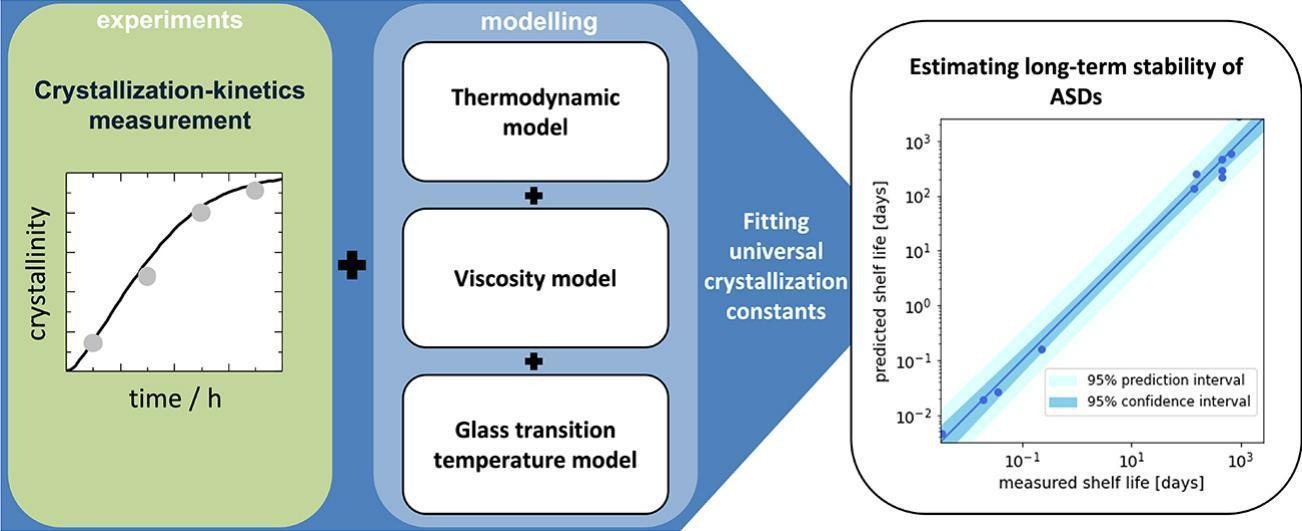The shelf life of ASDs: 2. Predicting the shelf life at storage conditions

Amorphous solid dispersions (ASDs) are a widely used formulation technology for poorly water-soluble active pharmaceutical ingredients (API). Depending on the API-polymer combination and API load in the ASD, the amorphous API might be thermodynamically metastable and crystallize over time. The crystallization onset is one critical factor that can define the shelf life of the ASD. Thus, for ASD formulations, long-term stability against crystallization of the API is of particular interest. This work presents a method for predicting the long-term physical stability of ASDs (crystallization onset time). The new approach combines the Johnson-Mehl-Avrami-Kolmogorov (JMAK) equation with classical nucleation theory. The shelf life predicted using the new approach depends on supersaturation (determined with PC-SAFT), viscosity (determined with WLF equation or Arrhenius equation) and two specific model parameters k’ and B. The latter were fitted to a few fast crystallization-kinetics measurements above the glass transition of the ASD. An additional crystallization-kinetics measurement below the glass-transition temperature of the ASD was used to determine the Arrhenius parameters. Once all parameters are determined for a given API/polymer combination and manufacturing method, they are valid for any API load, temperature, and RH. The proposed approach allows predicting the shelf life (crystallization onset) of a potential ASD in early stage of development within a few days. It was successfully verified for ASDs stored at 25 °C and 10% RH or 60% RH.
2. Materials and methods
ASDs were prepared by spray drying and treated by secondary drying to remove residual solvent. PVPVA (Plasdone S-630) and Soluplus® were used as polymers and were obtained from Ashland Inc. (Columbus, USA) and BASF SE (Ludwigshafen, Germany), respectively. Griseofulvin (GRI) (Ph. Eur. Grade) was investigated as model API and was purchased from Fagron (Rotterdam, Netherlands). Dichloromethane (purity >98%) served as solvent in the spray-drying process and was purchased from VWR (Randor, USA). All substances were used without further purification.
Download the full study as PDF here: The shelf life of ASDs: 2. Predicting the shelf life at storage conditions
or read it here
Friederike Wolbert, Christian Luebbert, Gabriele Sadowski, The shelf life of ASDs: 2. Predicting the shelf life at storage conditions, International Journal of Pharmaceutics: X, Volume 6, 2023, 100207, ISSN 2590-1567,
https://doi.org/10.1016/j.ijpx.2023.100207.

